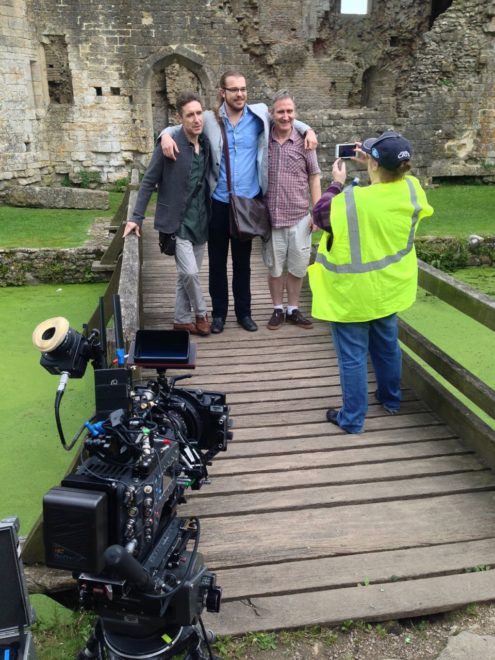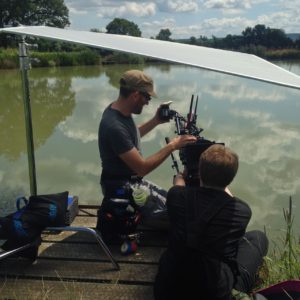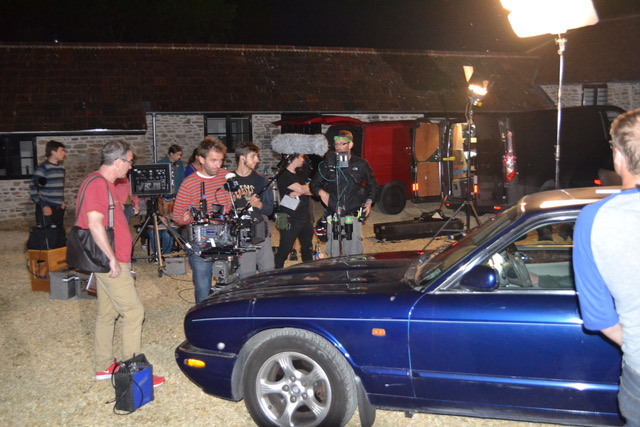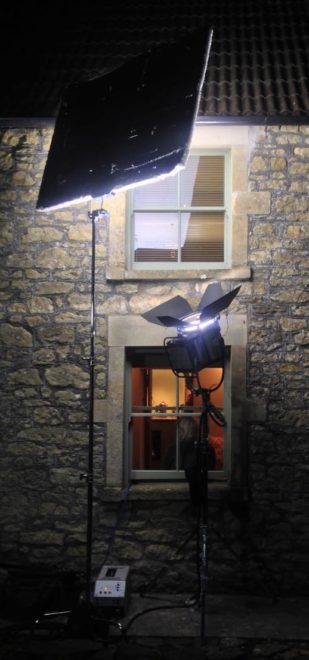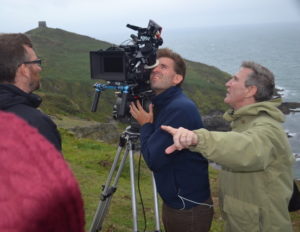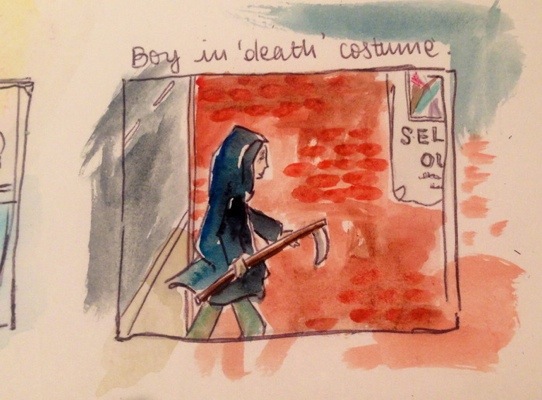Last week filmmaker Sophie Black‘s crowdfunding campaign smashed through its target. I asked her to share the story of how Songbird, starring X Factor contestant Janet Devlin, raised its funds. And if you’re interested in contributing yourself, the campaign is still running here. Take it away Sophie…
In all honesty, I was dreading the thought of crowdfunding for Songbird. I’ve worked on more fundraising campaigns than I can count (for myself and on behalf of other directors) ever since the early days of the format. Back then, it still seemed unique and exciting, and it was a little easier to reach your goal. Nowadays, everyone and their dog seems to have a funding campaign, raising money for films, inventions, albums… even personal ventures such as holidays and weddings!
The market has become over-saturated, and it’s more likely that your campaign will get a reaction along the lines of ‘not another one!’ rather than the intrigued enthusiasm you’re looking for. I’ve seen a steady decline in the amount of funds I’ve been able to raise over the years; my most recent campaigns, for the films Ashes and Night Owls respectively, were only able to raise between £800 and £2000, and even those amounts came after a hard fight.
However, if you want to get a film made, and you can’t afford to finance it yourself, crowdfunding can be a lifeline. There are very few funding resources for independent films, particularly short ones, and when my traditional funding applications for Songbird all proved unsuccessful, I was left no choice but to face crowdfunding again.
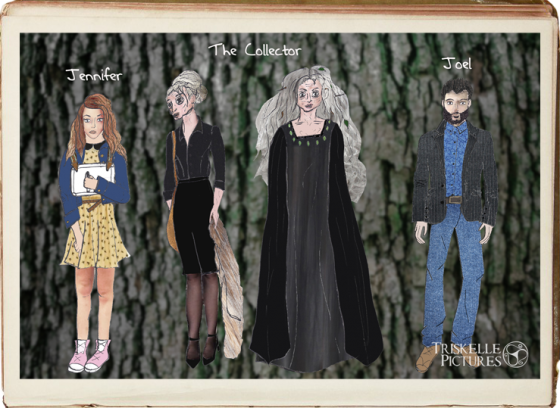
For me, there was one condition to running another campaign; I wanted someone attached with a fanbase. It’s clear by now that the most successful campaigns have someone involved with a good online following – be it the lead actor or even a director with a decent level of buzz around them. Another independent filmmaker I know, Helen Crevel, recently raised over £5000 in a couple of weeks because she had Doctor Who star Colin Baker attached to her film. And I’m sure we all remember how well Zach Braff’s fundraising campaign went, starting a chain of big-name campaigns.
Janet Devlin was a name that came up early on in pre-production for Songbird. Writer Tommy Draper had her in mind during some of the first drafts of the film, and I’d also been a fan of her music for a while, so I was aware of certain similarities between her and the lead character of Songbird, Jennifer. She also has a beautiful singing voice, so we knew that the musical elements of the film would be in safe hands. But, creative reasoning aside, if you had to just look at the casting from a business perspective, Janet has a huge online following across Youtube, Twitter and other social media, and her fans are very vocal and proactive in their support of her work. For all these reasons and more, we are very, very lucky to have Janet on board – and from the moment she announced her involvement in Songbird, the amount of interest in the film doubled – as did the amount of followers on the Triskelle Pictures Facebook page!
Even with those initial seeds sewn, myself and my team still launched the crowdfunding campaign with some trepidation. We had an early boost, as we were able to raise over £1000 within the first 24 hours. By the next day, we were on £1500… and then it stayed around that mark for about a week. An early sense of security was immediately replaced by doubt and fear, as well as emails from backers asking what would happen if we didn’t reach our target. There was always a certain amount we needed to raise in order to make the film, and as we’d set up our Indiegogo campaign to give us whatever funds we raised, even if it was too little, we were putting ourselves at risk of a fall.
Between myself and my core team, we had managed to raise a small amount of the budget ourselves before the campaign started (less than £1000) so we were able to drip-feed this into the campaign on and off in small amounts to keep it appearing active when we needed to. But we tried to keep the momentum going in other ways; as well as the standard social media posts morning, noon and night (the ‘bugging’ element of crowdfunding that no one really likes!), producer Laura Cann contacted relevant online magazines who might be interested in the campaign – fans of independent filmmaking as well as fantasy – and we both posted the campaign in relevant Facebook groups and forums.
We also maintained interest in the film by releasing new videos about it every time we hit a certain benchmark in our funding campaign (£500, £1000, £2500 etc). For added intrigue, we kept the title and content of each video secret until the subsequent one had been released. This was a technique director Neil Oseman and I first used during the post-production funding campaigns for Stop/Eject; it worked well then, and gave our followers some nice insights into the production, so I was keen to do it again. But there was one mistake we made back then that I didn’t learn from; once again, I didn’t get all of the videos ready ahead of the funding campaign. I did the first two/three, thinking we’d have plenty of time before the next target was reached. What happened next scuppered that plan…
Although the first surge of donations was unexpected, the people who donated were, to a degree, ‘accounted for’: they were people we knew, people who had supported our campaigns before, or film fans keen to find out more about a new film. These are your target audience for a standard fundraising campaign, and the type of people you usually expect (or rather, hope) will donate.
But behind the scenes, Janet’s fans had been slowly sharing the campaign page on social media, and the amount of ‘tweets’ and ‘mentions’ had grown steadily. Tommy helped aid this by making a list of people he noticed regularly shared Janet-related news, and he encouraged them by contacting them and thanking them, or by asking them directly to contribute. Janet and her team had also been working hard, not just behind-the-scenes but in effective public posts; as well as sharing her fans’ tweets, Janet posted a photo of herself writing the songs for Songbird, with a link to the campaign in the comments below. This gained more attention than any repetitive sharing of the campaign page alone would do.

Eight days into the Songbird campaign, we were stuck at around the £1500 mark still. I was producing a corporate shoot in the middle of a field that day, with minimal signal, so I didn’t pay much attention to my phone or the campaign. It didn’t seem overly active at the time. By the time I got signal again, we had nearly reached our target. We had suddenly had a surge of big donations – some in the £100s, as we had received on day one, but even a couple of £1000s. Two days later, we had not only reached our goal, but we had surpassed it by £2000. As I write this, the current total is just over £10,000. We asked for £7,500.
Getting more than you ask for isn’t all fun and games; it means that the cut Indiegogo (or whichever hosting site you use) will be much bigger, so you need to prepare yourself for that. Also, unless you double your budget, your new funds won’t be enough to boost every department of production, so you need to be clever about how you spend it. It can be good to think about things you didn’t have before, that you can now afford (most people forget to budget for post-production and festival entry fees in their initial budget. Going over target can enable you to think about that properly for the first time) rather than upgrading elements you already had. The other, final downside is that you need to be careful about where you put the money once it’s ready to be transferred; you can’t have amounts as big as £10,000 moving around your bank account without making sure its accounted for down the line!
But, these minor inconvenient truths aside, my team and I are of course ecstatic about having smashed our goal. We’re beyond-words grateful for all the support we have received so far. We went from being rejected for funding to raising 134% of our budget within a fortnight. And, with the unpredictable nature of crowdfunding, all I can say in conclusion is that it’s down to three things: 1) having a popular name in the lead role, 2) my core crew working damn hard every day, and 3) a good old dollop of flukey good luck on the end. Having Janet’s fan base behind us is a privilege, but I like to think that personally keeping a good online presence and supporting other independent filmmakers over the years might have given us a boost too, even if it was on a smaller scale. Because the first person who donates to your campaign – be them your friend, your colleague or even your Mum – is just as important as the person who takes you over your target.


